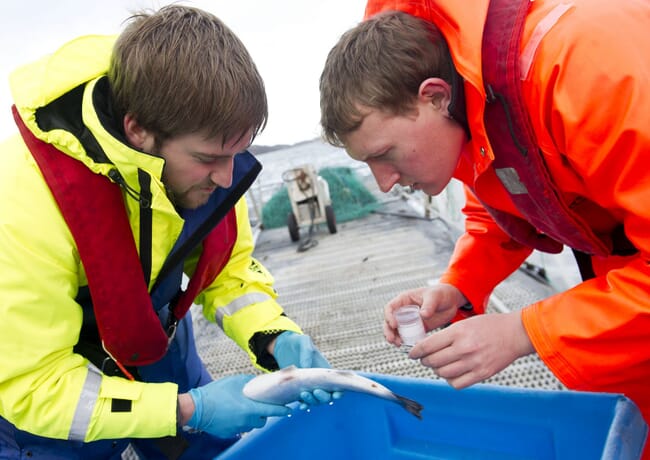
According to the ASC, significant lice-specific
changes to their salmon standard will “lead to more robustness in sampling and
monitoring and immediate remedy action when needed.”
“The revised standard requires farms to not only monitor the sea lice species L. salmonis, but to also include the less-researched species Caligus, where applicable (especially British Columbia, Canada). This will support a better understanding of the abundance of this species as a basis for future revisions. Additionally, to improve consistency of data collection and analysis, the new version establishes a clear sea lice sampling protocol for farms detailing frequency and sample size among other factors,” the council states.
While the previous standard set a global limit for maximum sea lice load on farms, a regional approach will now be taken.
“Sensitive periods and thresholds are now set according to jurisdictional regulations in each region. In situations where there are no limits nor a sensitive period established, ASC will require the use of the most rigorous sea lice limit in effect at that point in time and a sensitive period that reflects evidence of the time during which juvenile salmonids are present,” they state.
Immediate corrective actions and consequences
In the previous version of the standard, exceedance of sea lice limits was not always immediately identified or actioned, depending on audit timings. The new standard addresses this gap by requiring farms to inform the Conformity Assessment Bodies (CABs) within one working day if the sea lice limit is reached and take corrective action. If the farm fails to bring sea lice levels below the threshold within 21 days, the ASC certification shall be cancelled, therefore prohibiting farms from selling fish as ASC-certified.
“ASC recognizes the need to continuously improve our standards and finetune the requirements to make sure they deliver the intended positive impact,” Chris Ninnes, ASC CEO said.
“This new version is not the endpoint either. In fact, going forward, ASC will regularly review established sea lice limits across different regions and update its thresholds where necessary,” he added.
Next steps
The revised ASC Salmon Standard will become effective by February 1, 2023, thus making sure it is already applicable in the sensitive periods for out-migrating salmonids in all regions.




